
Preface: This is an adoption story of enduring love, and pure hope. Also, it intertwines with my own family story (and I didn’t see that coming.) The life of Native American orphan Nellie (Waddie) Leithead Justet became known to me in a most uncanny way, waking me up at 3 a.m. to be discovered in a pile of papers about to be discarded. My heart followed the trail as I wondered, “what is it you want me to find?” It led me to love and compassion expressed through her life, death, and beyond. I had to write about their remarkable lives.
Related: Read the uncanny story of how this story pulled me out of bed in the middle of the night.
An orphan taken in by Mormon Pioneers
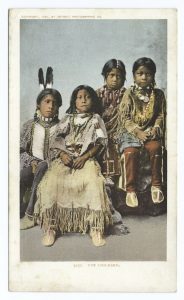
In about 1856, an Indian couple (the term “Indian” being vernacular of the day with no disrespect meant here) ventured into a settlement near Manti, Utah carrying a baby in their arms. Their tribe was at war, they said the girl’s parents were dead, and these two swam the Sanpitch river to bring the infant to safety. The baby was their niece, they said. This couple could not care for her, and a family by the name of Hinman took the child in.
Related article: Finding forgotten voices in the Church History Library
Let’s pause for a moment. I ached to leave my own baby girl for even a few hours because babies know when their parents are gone. I worried for my child’s safety in someone else’s care. Before I gave birth, I had never feared death, but now I take more precautions with my life because I cannot bear thoughts of my daughter growing up without a mother. The baby in this story once had parents. However, tragedy tore her from their protective arms and placed her at the mercy of a world that has not always cared for whether an orphan’s adoption story ends well.
Related article: Story endings – how does your story end?
Uprooted Lives
The Indian couple never returned, later presumed dead by the Hinmans. The baby’s given name was Waddie, and the family renamed her Nellie. They raised Nellie for the next few years until their lives were uprooted by a call by Brigham Young to settle in southern Alberta, Canada with a small band of Mormon pioneers (the term “Mormon” being vernacular of the day with no disrespect meant here, as they are now more accurately known as members of The Church of Jesus Christ of Latter-day Saints).
The Hinmans had only just begun establishing a farm in this new territory, but were dutiful when they received word from Mormon church leaders that they were needed elsewhere. This call, however, presented the Hinman family with a quandary: Without birth or official adoption records for little Nellie, they could never cross the border with her. Another complication: The Hinmans were in their 50s. Hardships and lifespan on the frontier made the age of 50 a lot older than it is today, and raising a very young child may have been especially hard.
Love & Uncanny Connections
As they journeyed north, the Hinmans sought a “good Mormon family” to adopt the girl, and they met a family (I have since learned were my ancestral relatives) in Farmington. Deborah Lamoreaux Leithead and James Leithead lived in Farmington and had one daughter, Ann Cross. They had buried twin girls in Canada before migrating with other Mormon pioneers.
Deborah Lamoraux Leithead is described in the histories as a kind, patient woman, and her grandchildren later said they adored her. Deborah’s daughter Ann Cross Leithead often said, “My mother must have loved me a lot because she held me all the way across the plains.”
Her husband James Leithhead kept a detailed journal and as I checked facts for this story my mouth gaped open to unearth rich insights about 4 of my own direct ancestors who figure in his life. I was delighted to see these cameo appearances in the James Leithead papers from my own ancestors, all from 4 different lines, information I had never read before. Is that one reason I was supposed to find this story?
Related: The uncanny discoveries and a prayer that preceded this episode
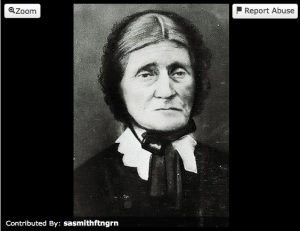
“You don’t want me?”
Back to Nellie’s adoption story. It seems Deborah’s Lamoreaux Leithead’s heart was touched by this little Indian girl, and she wanted her. At the age of four or five years old, I can hardly comprehend the confusion and heartache of litlte Nellie when the only family she knew moved to Canada without her. I can only imagine a child of that age wondering, “You don’t want me?” Now the young girl had to adjust to a new family. I don’t know the Hinmans, of course, and they were probably good folks, but the Leithead family seem like exceptional people. Being adopted by them was probably the best fortune that could have befallen little Nellie, as hard as it most likely was in that moment of her adoption story journey.
Related: DNA Angels help people find their birth parents
Adoption story or slave trade of Indian children?
It bears noting that this adoption story could have ended on a tragic note. At this time it was not uncommon for Native Americans to come into town looking for families to take in children. These children were often traded for goods, making it smack of a financial transaction. Remember that this was during a time when slavery was still practiced in this country and Mormon families may have come from the South. Also, the slave trade among native tribes is well documented. Prejudices existed between whites and tribes. However, more than one adoption story appears to have been in a spirit of Christian compassion even when it was a hardship to add another mouth to feed.
Other situations, though, were sad accounts with children basically acting as servants rather than members of the family. That also sometimes happened when white orphans were “adopted” into families. Teenage boys were brought onto farms to help with labor or girls were needed as domestic helpers. Remember the 1970s version of Pete’s Dragon with the lyrics, “We’ve got a bill of sale right here that says he belongs to us?” It was a song because it happened in real life.
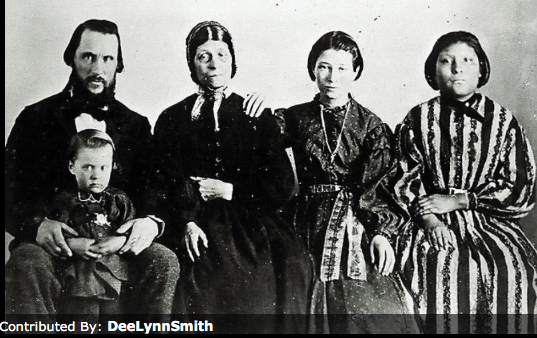
An Adoption Story of Hope
The evidence shows that Deborah Lamoreaux Leithead acted from a place of love. My mind imagines being in Deborah’s shoes, flooded with motherly feelings of compassion and wanting to give this girl a beautiful life. I like to believe in that situation that I would want this to become my own adoption story too. My heart tells me that I also would have wanted the child.
Deborah and James proceeded to adopt Nellie. They even saw to it that she had the “same advantages” as their birth daughter. Little Nellie had found her forever family. Now as Nellie Leithead, she received the best education available at that time. Nellie’s siblings later said they loved her very much and always regarded her as a full sister. https://familysearch.org/tree/person/LHY9-SKV/memories
At this time, the Leitheads were also asked to leave the comforts of Farmington to settle the inhospitable Muddy River area south of St. George. Again, this hardship turned into a blessing for Nellie because when she came of age, she met and married the wonderful Daniel Justet.
Nellie Marries for Love
The Justet family had converted to Mormonism in Italy, but were of French descent, having been persecuted for their faith by the Catholic church there. In Italy, Mormon missionaries visited their village and many in their community (of the Waldensian faith, a unique branch of Christianity) joined the Mormon church. They sailed across the sea to America, and then on to Utah.
Here are accounts about the life Daniel and Nellie built together:
They were married at Santa Clara, Utah, 6 January 1870. Nellie and Daniel then went with the extended Justet family to Panguitch, Utah and by 1881 they settled in Escalante. Since Daniel was a rock mason by trade, he built many of the homes now standing in Escalante. Daniel and Nellie had nine children and they were beloved in that community.
Related article: When the places of our ancestors beckon us – a nod to Zion National Park History
Sharing her gifts
Nellie was known as Aunt Nellie because of her kind, thoughtful, and loving nature. Nellie was a woman of many talents. Since she was well-educated and she helped everyone with their lessons. She was also a very good nurse, going to many families to serve them when needed.
Along with this, she was an excellent seamstress and had the talent of making beautiful rag dolls. At Christmas time she would make dolls for all the little girls in the community. Her nature was one of understanding others’ troubles and having compassion for them. Her personality radiated out to all who knew her. Daniel was the same, with everyone coming to him for help.
Social Traditions
Their family was very talented in all types of music—piano, violin, guitar, accordion and singing which made it a wonderful place for young people to gather to have a good time. Their home was one where old and young met.
For amusement they had house parties, dances and candy pulls. For their dances, they paid the fiddler with produce. A young man could often be seen going to a dance with his girl on one arm and a squash on the other. The first 4th of July held in Escalante was celebrated with the pioneers all marching while Daniel beat on an old bass drum. Some of the people were barefooted, yet they sang songs and danced, and were just as happy as those who had shoes. The people with shoes took them off to keep from stepping on feet of the shoeless.
The heartbreaking reason she asked Daniel not to remarry
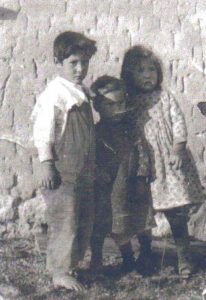
In February of 1892 Nellie contracted pneumonia and on her deathbed was heartbroken to leave nine children behind. She asked her love, Daniel to promise he would never marry again. He would instead raise their family himself. She was in her early 50s.
Perhaps her compassionate nature was an inherent, born personality trait. However, one can’t help but wonder what it must have been like to grow up as an Indian child, raised in a white community. Nellie must have been ever mindful that her children were half Indian and she could not protect them. As I read other accounts of native children adopted into Mormon families, not all were happy stories. What had she seen in her day? To put this in historical context, we can speculate how Indian conflicts and human prejudices might have looked through her eyes. Whatever her exact thoughts, her children said that she asked for this promise because she feared her children would be mistreated by another.
Also, Nellie might have remembered how she felt when at four-years-old, the Hinmans left for Canada. Now Nellie was leaving nine children behind, including one of age four. My heart aches to think of it.
One of Nellie’s daughters, Susannah was nine years old and vividly recalled her father giving this promise to her mother.
Daniel kept his word
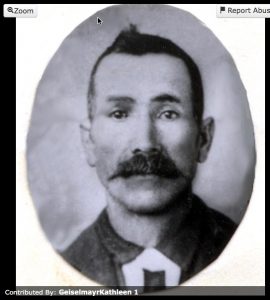
Daniel kept his word. He lived another 33 years, and his children said he did a “very good job” raising them. Here is what the records say about Daniel:
He provided well for his family. He worked hard on his twenty-acre farm. It was said of him that he raised the best grain and the largest potatoes in the valley. He also raised all kinds of vegetables in the garden at home. In later days he had a fine orchard and sold hundreds of pounds of dried fruit each year. He also had a handsome team of Hamiltonian horses. His milk cows were of the best quality. Whatever he undertook to do, he put forth his best efforts. His home, his yard and his workshop were kept clean. Everything had its place.
Daniel was a jack-of-all trades and had learned the hard way to do many things to help himself and his neighbors. He sharpened blades on a grind stone he had made himself out of sandstone. His grandchild learned to turn the grindstone for him. He also helped men re-set their wagon wheels, make reaches and wagon tongues. For the women of the town, he rebuilt their wooden tubs. All this he did free of charge unless they would, in turn, help him with his work.
An example of integrity
The account says, “He was a religious man as true religion goes. Daniel tried hard to teach his children through his own example to be honest and upstanding. He never allowed gossip or even a hint of vulgarity in the home. Each child had his or her job to do and did it without any questions asked.”
Daniel became a very good rock mason. He helped to build the old rock church and quarried and dressed the rock and set the foundations for most of the old houses in Escalante. He also helped to lay the foundation of the old brick schoolhouse, which still stands.
Daniel made friends wherever he went and was well-liked by everyone who knew him. He died in 1925 at the age of 83, the same as he lived, not owing a penny to anyone. (History of Daniel Justett, Jr. https://familysearch.org/photos/artifacts/2029964)
This adoption story continues with a large and proud posterity
What became of their children? They blossomed into a large posterity that have shown great interest in their heritage. Here is an account of their youngest daughter, Dora, who was four when Nellie passed away.
During her teen years, Dora worked for the Lamoreaux family of Parowan (another branch of my Lamoreaux family line). Dora got very attached to this family and often talked about her experiences while living with them.
Dora was a self-taught artist and several of her paintings won blue ribbons at the county fair.
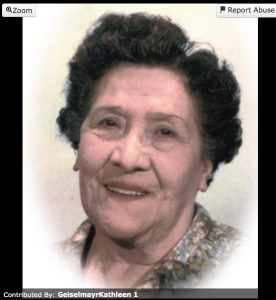
Blossoming through Hardships
Mostly she painted for the pleasure and enjoyment it gave her. Dora loved fishing and she went with anyone that would take her, living to 90 years of age. She taught her family, among other things, a love of nature, kindness to animals, about the benefits of simple pleasures along with the benefits of hard work, and even though she could be temperamental and feisty at times (most artistic people are) she had the ability to laugh at herself and had a good sense of humor.
She had a full life. She had times of sadness and sorrow and times of joy and happiness. She tasted of the prosperous life and of the hardships of having very little; all with the same dignity. She developed her talents, and knew how to make a happy home out of a wagon while sheepherding with her husband. https://familysearch.org/tree/person/KWZ6-SPM/memories?spouse=KWZK-FRL
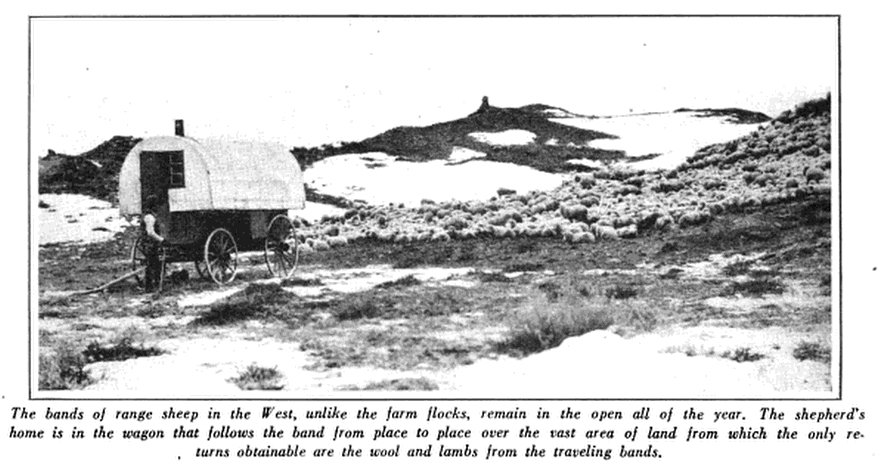
I hope you have enjoyed this complex and ultimately triumphant adoption story. It inspires me and gives me hope when I read of the overcoming grit of our forbears.
Personal footnote: Read the uncanny story of how I came to discover these details here:
 Rhonda Lauritzen is the founder and an author at Evalogue.Life – Tell Your Story. Rhonda lives to hear and write about people’s lives. She believes that when you tell your story, it changes the ending., She and her husband Milan restored an 1890 Victorian in Ogden. She especially enjoys unplugging in nature. Check out her books: How to Storyboard, and Every Essential Element. Most recently she was the writing coach of bestselling author, Rob A. Gentile, who wrote Quarks of Light, A Near-Death Experience: What I Saw That Opened My Heart.
Rhonda Lauritzen is the founder and an author at Evalogue.Life – Tell Your Story. Rhonda lives to hear and write about people’s lives. She believes that when you tell your story, it changes the ending., She and her husband Milan restored an 1890 Victorian in Ogden. She especially enjoys unplugging in nature. Check out her books: How to Storyboard, and Every Essential Element. Most recently she was the writing coach of bestselling author, Rob A. Gentile, who wrote Quarks of Light, A Near-Death Experience: What I Saw That Opened My Heart.
Credits:
I appreciate the many details for this adoption story that were available from an account by Nellie’s granddaughter, Arlene Sandin Haney. Another account came from descendant Darlene Sawyer, and another from Betty Jean Bradbury. Several other family members are attributed as providing oral history information, and family tree records came from FamilySearch.
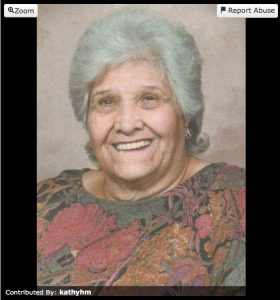
I also spoke with professional genealogist Diane Rogers who had been hired by a descendant of Nellie and Daniel Justet to further investigate these lines and whose work was cited in the Utah Genealogical Society newsletter.
Additional footnote: There are multiple accounts of various parts of this story, and there are nuances that bear investigation from a historical or genealogical perspective. This particular article is meant to be a narrative story and as such, I have omitted places where disclaimers, conflicting facts and footnotes may have been useful. Otherwise it would read more like a scholarly paper and this article was long enough! More details and background information are available on FamilySearch. If anyone has any information that could shed light on additional details about tribes, customs, or this family, I welcome comments and ask you to reach out to me. I still don’t really know why this story came into my life in such an uncanny way, but it felt important to me, so I am recording and sharing it here.
Do a family history interview

Sign up and we will email you a free, printable download of our mini-course to conduct a great oral history interview. You will be done in a week or less.




Hello,
Thank you for sharing this story about your family history, I was excited to find it because it provided me some important information for a project that I am working on, also having to do with your family.
Daniel & Nellie had a son named James Leithead Justet (8/1/1875-6/9/1942) who was married to Elizabeth Ann Duel Justet. I recently came across a death certificate for a 1yr old African American girl named Zelma Justet who died from dysentery on July 15th, 1905 in escalate utag. Zelma’s death certificate indicates that James & Elizabeth Justet were her parents.
I am very interested in learning more about this young girl and how she happened to come into the care of James & Elizabeth. Please let me know if you have any information.
Thank you
Pingback: There are no coincidences - prayer and the uncanny - Tell Your Story with Evalogue.Life
This was so interesting, Rhonda. I loved it. I’m still working on getting “living”notes together. Love your posts and emails . Always bring a smile to my face when I see an email from ya.
Thank you, Sharon! And I always smile when I see that you have “liked” a post or made a comment. I can’t wait to see what you put together for your own life. You have a rich and interesting voice so it will be really great.